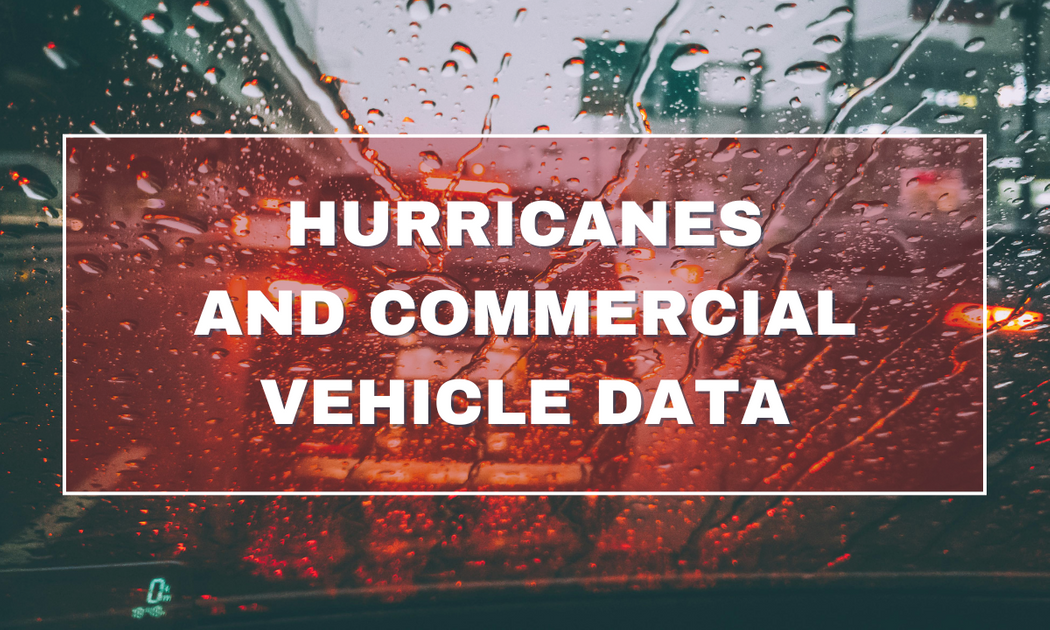
Geotab used commercial vehicle data to understand the impact extreme weather events can have on the fleet industry and overall traffic volume.
Photo: Kim Jinhong via Pexels / Automotive Fleet
A Geotab ITS study used data from commercial vehicles to look at the impact of hurricanes on specific regions and recovery times. Severe weather events are a logistical nightmare for fleets as managers can’t plan around unknown roadblocks to perform business as usual.
While the Waffle House Index helps folks determine the intensity of impending storms, Geotab’s Altitude data helps fleets understand if/when they can fully resume normal operations.
Based on three key metrics, Geotab’s data shows the difference in vehicle volume patterns between Hurricane Milton in Florida and Hurricane Helene in North Carolina. The metrics are:
- Device Connectivity Lag Time: This metric shows the time a Geotab GO device takes to log data, indicating network downtime due to hurricanes that caused power outages.
- Roadway Vehicle Volumes: This shows the percentage of vehicles on the roadways compared to the maximum observed volume and how a storm affects recovery periods and traffic patterns.
- Travel Hot Spots: This metric shows the percentage of vehicles visiting small geographic areas compared to the maximum observed vehicle count and how travel behavior changes before, during, and after a storm.
Key Findings in Two States
The metrics focus on Hurricane Helen’s flooding in the Asheville, North Carolina, area and the effects of Hurricane Milton in Tampa, Florida.
Metric #1: Device Connectivity Lag Time
Geotab GO devices record a vehicle’s driving activities and send the data electronically to a server. The time it takes for data to be sent from a GO device and then recorded on a server can be considered a proxy for cell connectivity.
Takeaway: During Hurricane Helene, connectivity lag times spiked in the Asheville area, and the flooding and power outages caused significant disruptions to cell service. Connectivity was still staggered in some areas days after the storm had passed.
While the Tampa area had similar connectivity lags during Milton, especially in the southeast part of the city, cell service was back to normal after the storm.
Metric #2: Roadway Vehicle Volumes
This metric shows vehicle volume as a percentage of the maximum observed volume to compare the same roadways over a week.
Takeaway: Vehicle volumes in both states dropped during the hurricanes due to a lack of mobility and road closures.
North Carolina’s roadway volumes returned to normal a few days after the hurricane, but the Blue Ridge Parkway was still closed after most roads in the Asheville area were open. In Florida, traffic volumes were back to normal by Oct 14, several days after Hurricane Milton landed.
Metric #3: Travel Hot Spots
According to Geotab, this metric counts the number of vehicles that visit each sub-geography (hexagonal units covering ~98 square miles) on a given day. It calculates the ratio of vehicles on a given day to the maximum number of vehicles that have visited the same area on similar days. Essentially, comparing Wednesdays with Wednesdays.
Takeaway: In both areas, travel activity decreased before the hurricanes as residents and fleets prepared for the storms. Travel hot spots showed limited movement during the storms, increasing as roads and conditions improved.
Prepared Emergency Response for Extreme Weather
The findings demonstrate how data on connectivity, vehicle volume, and travel patterns provide valuable insight into storm severity and recovery timelines.
This information can guide fleet transportation planners and emergency managers in developing effective mitigation and response strategies to improve safety and mobility during extreme weather events.
Examples of Fluctuating Roadway Volumes
The maps show an example of vehicle volumes on the days around Hurricane Milton’s arrival in Tampa. The dates shown are October 7, 9-10, 12 and 14. October 9-10 shows the lowest overall vehicle volumes, while activity fully returns to normal by October 14.






